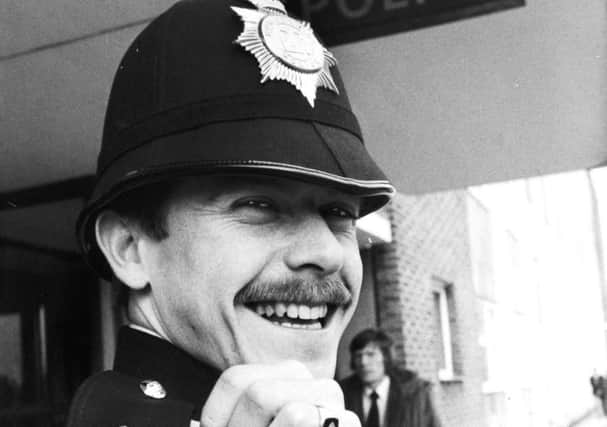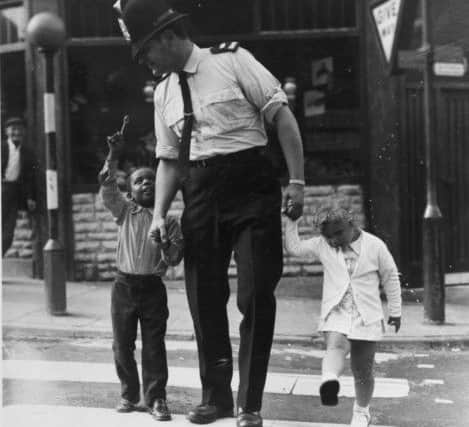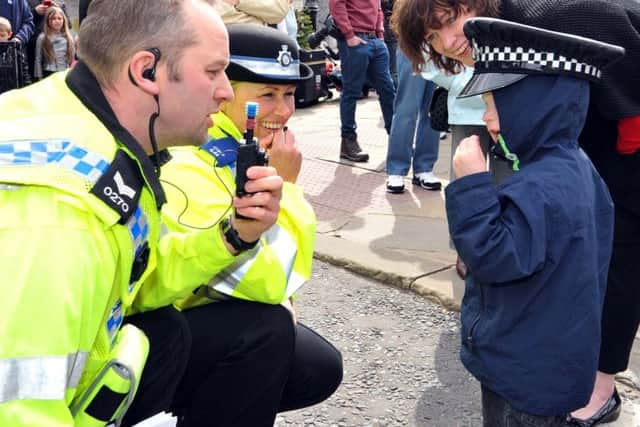In mourning: Leeds policeman’s eulogy as traditional ‘custodian’ helmet is replaced by cap


But as the traditional ‘custodian’ helmet worn by officers in West Yorkshire is replaced by a modern cap, one Leeds constable has spoken publicly of how he will “mourn the passing of a little bit of heritage”.
In an eloquent message on Facebook, PC Mike Bateman, of the Leeds inner east neighbourhood policing team (NPT), wrote: “Today a milestone will pass quietly in the policing of West Yorkshire. Officers will no longer wear their traditional police helmet, it is being retired to ceremonial duties and more modern caps will be worn on duty.
Advertisement
Hide AdAdvertisement
Hide Ad“For some, the argument goes, the helmet or ‘custodian’ is a relic of the past, cumbersome and no longer fit for purpose.


“Well it’s hard for this bobby to argue against that. I’m 6ft 3ins already without my ‘lid’ on, with the added height the washing lines of Harehills front yards are a constant challenge to a graceful entry! “And the new caps are certainly less expensive than the helmet – we live in frugal times after all. But for all the positives a part of me will mourn the passing of a little bit of heritage.”
The custodian was first adopted by the London Metropolitan Police in 1863 to replace the ‘stovepipe’ top hat worn since 1829.
Other forces followed suit but many customised it with their own badges and designs. Some adopted the helmet without any badge, others designed their own, usually with the county’s arms or crest in the centre.
Advertisement
Hide AdAdvertisement
Hide AdDuring the 1930s, the Home Office attempted to standardise their design with the ‘Home Office Pattern’.


Over time the helmet became synonymous the world over with the image of the British ‘bobby on the beat’.
But in January this year West Yorkshire Police revealed that the helmet was being phased out to be replaced by a peaked cap.
Superintendent Keith Gilert said at the time: “West Yorkshire Police, like all forces, has had traditional police caps as part of its uniform for many years, and issued them to officers in a variety of roles.
Advertisement
Hide AdAdvertisement
Hide Ad“What we have found increasingly is that as the duties carried out by officers and their uniforms have evolved, peaked caps have become more appropriate and more in keeping than the traditional helmets in many situations.
“A survey last year revealed the overwhelming majority of staff who responded wanted to use the operational cap as part of everyday uniform than the traditional helmet and as a consequence, the force took a decision in late 2014 to progress towards this position, with the caps being rolled out during 2015.
“Whilst this move recognises the operational reality of modern policing, West Yorkshire Police firmly recognises the iconic importance and ceremonial significance of the traditional police helmet.
“There will always be occasions when the use of a helmet will be preferable over a cap and in these circumstances a helmet will be available. Examples of such occasions might be funerals, Remembrance Day parades and similar ceremonial occasions where tradition will quite rightly take precedence over practicality.”
Advertisement
Hide AdAdvertisement
Hide AdPC Bateman said the change of head wear was unlikely to cause much concern.
But he added: “Across the world as well as here at home, the custodian is a symbol of nearly 200 years of policing but also the way in which we police.
“A rich history of innovation, bravery, professionalism and service, the ‘bobby on the beat.’
“But I’ll try not to get too nostalgic or sentimental, this tough job will go on no matter what’s placed on our head (or shoulders!)
Advertisement
Hide AdAdvertisement
Hide Ad“Change is inevitable and in time I will get used to my new cap just as the first bobbies who traded in their coat tails and ‘stove pipes’ for tunics and custodians did.
“But when you see us now in our ‘wicking’ shirts and our ‘tactical’ vests festooned with radios, cameras, chemical sprays, extendable batons and tasers, be assured that wrapped inside the kevlar continues to be a proper British bobby.”